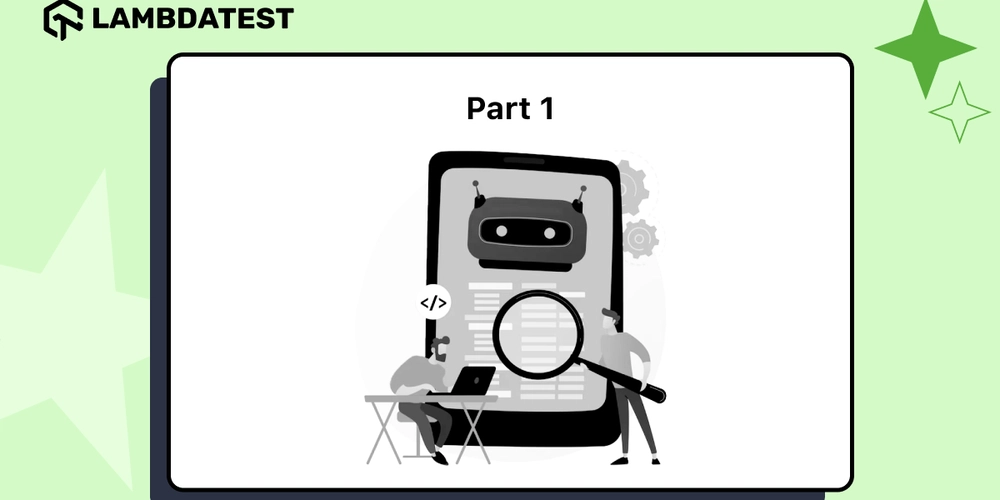Website Performance Optimization: Proven Techniques for Faster Websites
In the current age of AI apps, where every second counts, web performance optimization is a critical skill for delivering exceptional online experiences. A slow website doesn't just test a user's patience, it can drive them away entirely, costing businesses revenue and reputation. Research shows that 40% of users abandon a site if it takes more than 3 seconds to load, and 47% expect pages to load in 2 seconds or less. For e-commerce giants like Amazon, a mere 100ms delay translates to a 1% drop in sales. In this article we'll explore everything from minimizing HTTP requests to optimizing images, CSS, JavaScript, and server-side operations, all backed by real-world examples that prove these methods work. Let's dive into the essentials of website speed and how you can transform your site into a high-performing asset. Introduction to Web Performance Optimization Web performance optimization is the art and science of making websites load faster, run smoother, and deliver a seamless user experience. It's about reducing the time it takes for a page to become fully interactive, measured through metrics like Time to First Byte (TTFB), First Contentful Paint (FCP), and Time to Interactive (TTI), while ensuring the site performs well across devices and network conditions. Why does it matter? Beyond user frustration, slow websites hurt your bottom line. Google considers website speed a ranking factor, meaning optimized sites climb higher in search results. Faster load times also improve conversion rates and reduce bounce rates. For instance, Pinterest saw a 15% increase in search traffic and sign-ups after cutting perceived wait times by 40%, while Etsy gained a 12% revenue boost from a 150ms improvement. Let's break down proven techniques to enhance website speed, addressing common pain points and answering key questions like “How do I minimize HTTP requests?” and “What's the best way to optimize images?” Let's start with one of the foundational steps: reducing HTTP requests. Minimizing HTTP Requests Every time a browser loads a webpage, it sends HTTP requests to fetch resources like images, scripts, and stylesheets. Too many requests slow things down, as browsers can only handle a limited number of simultaneous connections. Minimizing HTTP requests is a cornerstone of web performance optimization. How to Minimize HTTP Requests Combine Files: Merge multiple CSS or JavaScript files into one. Tools like Webpack or Gulp streamline this process, cutting down requests without changing functionality. Use CSS Sprites: Combine small images like icons or buttons into a single sprite sheet. Amazon famously uses sprites for product icons, reducing dozens of requests to just one. Implement Lazy Loading: Delay loading non-critical resources, such as images below the fold, until they're needed. The HTML loading="lazy" attribute makes this simple for images and iframes. Inline Small Resources: For tiny CSS or JavaScript snippets (under 1KB), embed them directly in the HTML to eliminate extra requests. Fewer requests mean less waiting. A site with 50 separate resources might take seconds longer to load than one with 10, especially on mobile networks. By tackling this bottleneck, you pave the way for faster rendering. Pro Tip: Use a tool like Chrome DevTools' Network tab to audit your site's requests and identify opportunities for consolidation. Optimizing CSS and JavaScript CSS and JavaScript are vital to modern websites, but if they're not optimized, they can block rendering and drag down website speed. Effective CSS and JavaScript optimization ensures these assets enhance rather than hinder performance. CSS Optimization Techniques Minify CSS: Strip out comments, whitespace, and redundant code with tools like CSSNano or CleanCSS. A 100KB stylesheet might shrink to 70KB, speeding up downloads. Extract Critical CSS: Inline the CSS needed for above-the-fold content, deferring the rest. This reduces render-blocking delays. Avoid @import: Replace @import with tags, as the former forces sequential loading of stylesheets. JavaScript Optimization Techniques Minify JavaScript: Compress files with UglifyJS or Terser, removing unnecessary characters without altering functionality. Load Asynchronously: Use async or defer attributes for non-critical scripts. For example, lets the page render while the script downloads. Leverage Bundlers: Tools like Webpack or Rollup bundle multiple scripts into a single, optimized file, reducing requests and improving load times. Twitter uses Webpack to minify and bundle JavaScript, cutting file sizes and boosting performance for millions of users. These techniques ensure scripts and styles load efficiently, keeping visitors engaged. Image Optimization Images often account for over 50% of a webpage's total size, making image optimization a game-changer for web performance optimization. A poorly opt

In the current age of AI apps, where every second counts, web performance optimization is a critical skill for delivering exceptional online experiences. A slow website doesn't just test a user's patience, it can drive them away entirely, costing businesses revenue and reputation. Research shows that 40% of users abandon a site if it takes more than 3 seconds to load, and 47% expect pages to load in 2 seconds or less. For e-commerce giants like Amazon, a mere 100ms delay translates to a 1% drop in sales.
In this article we'll explore everything from minimizing HTTP requests to optimizing images, CSS, JavaScript, and server-side operations, all backed by real-world examples that prove these methods work. Let's dive into the essentials of website speed and how you can transform your site into a high-performing asset.
Introduction to Web Performance Optimization
Web performance optimization is the art and science of making websites load faster, run smoother, and deliver a seamless user experience. It's about reducing the time it takes for a page to become fully interactive, measured through metrics like Time to First Byte (TTFB), First Contentful Paint (FCP), and Time to Interactive (TTI), while ensuring the site performs well across devices and network conditions.
Why does it matter? Beyond user frustration, slow websites hurt your bottom line. Google considers website speed a ranking factor, meaning optimized sites climb higher in search results. Faster load times also improve conversion rates and reduce bounce rates. For instance, Pinterest saw a 15% increase in search traffic and sign-ups after cutting perceived wait times by 40%, while Etsy gained a 12% revenue boost from a 150ms improvement.
Let's break down proven techniques to enhance website speed, addressing common pain points and answering key questions like “How do I minimize HTTP requests?” and “What's the best way to optimize images?” Let's start with one of the foundational steps: reducing HTTP requests.
Minimizing HTTP Requests
Every time a browser loads a webpage, it sends HTTP requests to fetch resources like images, scripts, and stylesheets. Too many requests slow things down, as browsers can only handle a limited number of simultaneous connections. Minimizing HTTP requests is a cornerstone of web performance optimization.
How to Minimize HTTP Requests
- Combine Files: Merge multiple CSS or JavaScript files into one. Tools like Webpack or Gulp streamline this process, cutting down requests without changing functionality.
- Use CSS Sprites: Combine small images like icons or buttons into a single sprite sheet. Amazon famously uses sprites for product icons, reducing dozens of requests to just one.
- Implement Lazy Loading: Delay loading non-critical resources, such as images below the fold, until they're needed. The HTML loading="lazy" attribute makes this simple for images and iframes.
- Inline Small Resources: For tiny CSS or JavaScript snippets (under 1KB), embed them directly in the HTML to eliminate extra requests.
Fewer requests mean less waiting. A site with 50 separate resources might take seconds longer to load than one with 10, especially on mobile networks. By tackling this bottleneck, you pave the way for faster rendering.
Pro Tip: Use a tool like Chrome DevTools' Network tab to audit your site's requests and identify opportunities for consolidation.
Optimizing CSS and JavaScript
CSS and JavaScript are vital to modern websites, but if they're not optimized, they can block rendering and drag down website speed. Effective CSS and JavaScript optimization ensures these assets enhance rather than hinder performance.
CSS Optimization Techniques
- Minify CSS: Strip out comments, whitespace, and redundant code with tools like CSSNano or CleanCSS. A 100KB stylesheet might shrink to 70KB, speeding up downloads.
- Extract Critical CSS: Inline the CSS needed for above-the-fold content, deferring the rest. This reduces render-blocking delays.
-
Avoid @import: Replace
@importwithtags, as the former forces sequential loading of stylesheets.
JavaScript Optimization Techniques
- Minify JavaScript: Compress files with UglifyJS or Terser, removing unnecessary characters without altering functionality.
-
Load Asynchronously: Use async or defer attributes for non-critical scripts. For example,








































































































































































![[The AI Show Episode 143]: ChatGPT Revenue Surge, New AGI Timelines, Amazon’s AI Agent, Claude for Education, Model Context Protocol & LLMs Pass the Turing Test](https://www.marketingaiinstitute.com/hubfs/ep%20143%20cover.png)



































































































































![From drop-out to software architect with Jason Lengstorf [Podcast #167]](https://cdn.hashnode.com/res/hashnode/image/upload/v1743796461357/f3d19cd7-e6f5-4d7c-8bfc-eb974bc8da68.png?#)








































































































.jpg?#)
































_ArtemisDiana_Alamy.jpg?#)


 (1).webp?#)






































































-xl.jpg)











![Yes, the Gemini icon is now bigger and brighter on Android [U]](https://i0.wp.com/9to5google.com/wp-content/uploads/sites/4/2025/02/Gemini-on-Galaxy-S25.jpg?resize=1200%2C628&quality=82&strip=all&ssl=1)










![Apple Rushes Five Planes of iPhones to US Ahead of New Tariffs [Report]](https://www.iclarified.com/images/news/96967/96967/96967-640.jpg)
![Apple Vision Pro 2 Allegedly in Production Ahead of 2025 Launch [Rumor]](https://www.iclarified.com/images/news/96965/96965/96965-640.jpg)



































































































































